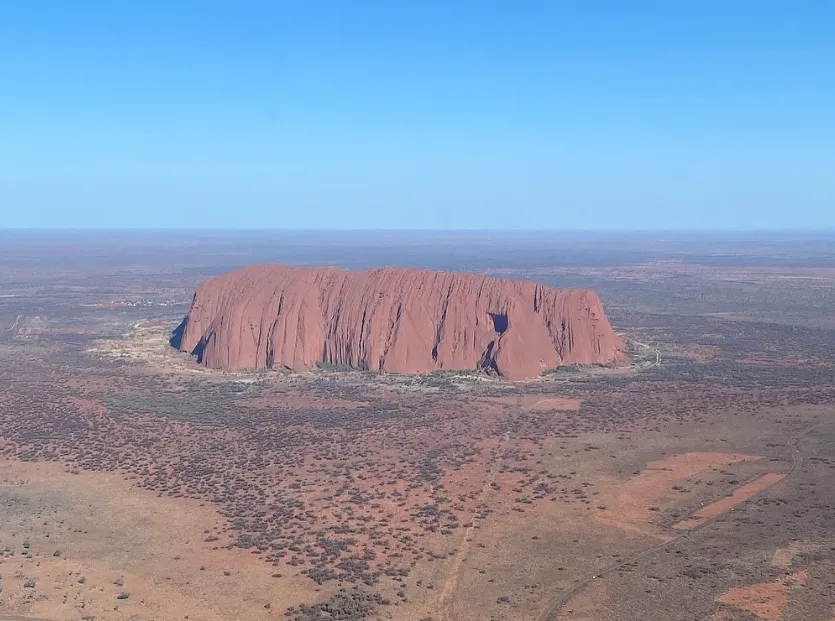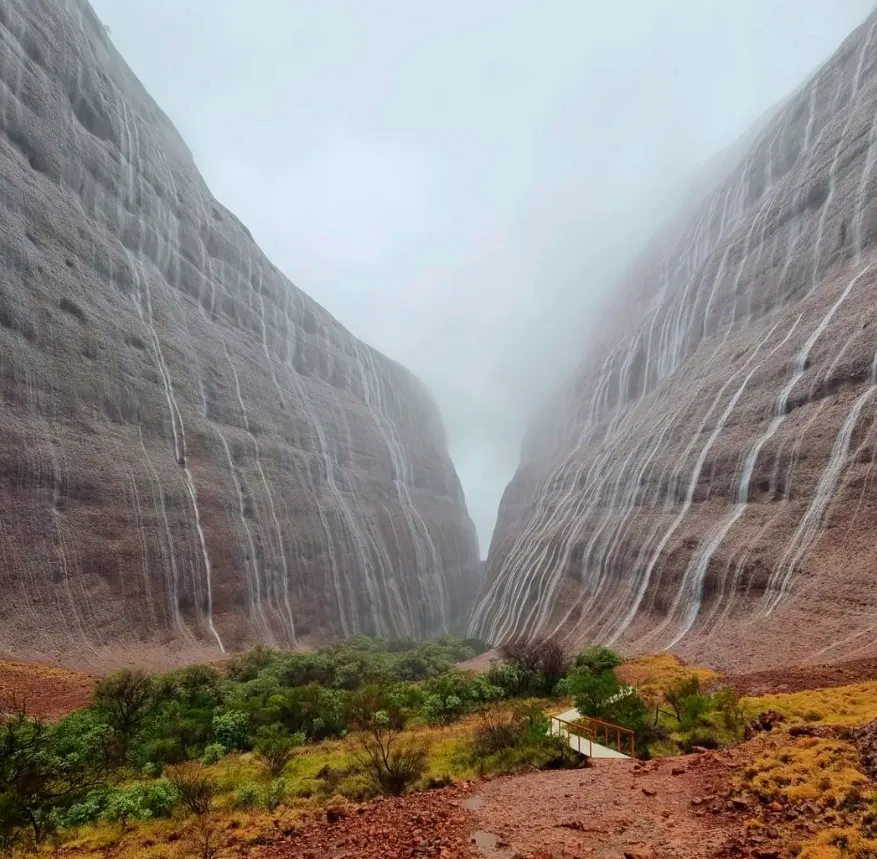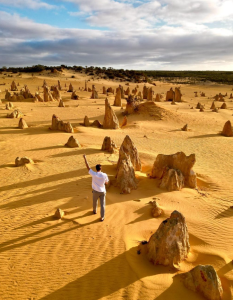
In the middle of Australia’s desert, in Northern Territory’s “Red Centre,” you will find Uluru or Ayers Rock, a natural wonder that stands majestically as a monolithic structure. This place of interest is quite awesome and holds cultural value; besides being home to several waterholes they are also spiritual sites. The paper examines the role of these pools in enhancing biodiversity, cultural significance to Anangu people who are traditional custodians of the area and its contribution to the beautiful physical environment found at Uluru-Kata Tjuta National Park. The center point for our journey is Mutitjulu Waterhole which is an permanent water body that symbolizes the spiritual and physical lifeline on this ancient land.
History of Waterholes at Uluru

These waterholes have played an important part in indigenous life since time immemorial, showing how rich their history is. These natural water supplies positioned all over Uluru-Kata Tjuta National Park’s dusty terrain allow one to survive where climatic conditions are adverse but also hosting numerous generations during festivities, famines and fierce battles. Among them, Mutitjulu Waterhole stands out due to its reliable sources of fresh water even during droughts.
Origins and Historical Significance
The formation of these waterholes can be traced back to the geological activities that shaped the iconic rock formations of Uluru and the nearby Kata Tjuta, also known as the Olgas. These rock domes and soft folds in the landscape capture rainwater, which then collects in deep cracks and crevices, forming natural reservoirs. The significance of these sites goes beyond mere survival; they are steeped in the Aboriginal Rock Art that adorns many of these rock shelters, telling the stories of the Tjukurpa, the creation period, and the epic deeds of beings like the huge devil-dog and the water snake.
The Mutitjulu Waterhole

Geographical Features
It is located on the northeastern end of Uluru and encircled by stringy barks while supported by a sheer rock face. The waterhole remains full throughout the year as opposed to other seasonal holes found in various parts of park mainly due to its unique location within the water table and its protected status under the national park.
Cultural Stories and Legends
The Mutitjulu Waterhole is not just any source of water; it stands at the heart of Anangu people’s cultural landscape. For instance, Kuniya, a Python woman had a fight with Liru who was poisonous snake man at this very place. Furthermore, there is an ongoing indigenous cultural practice associated with the presence of this ceremonial pole at one end of the water hole.
Role in Sustaining Plant and Animal Life
Importantly, these pools play vital roles in sustaining life for both plants and animals making their ecological values indispensible (Aw 2007). This is particularly necessary especially during summer when other water outlets become scarce due to high temperatures prevailing resulting in drying up.
Ecosystem Support
Waterholes are the backbone for many different types of animals and plants. In the dry season, it is a matter of life or death for all kinds of creatures that range from small rare desert fish to giant red kangaroos which depend on these water points. The plant life around them, like hardy spinifex or shade-producing desert oaks thrive because they hold moisture in natural reservoirs.
Biodiversity Hotspots

Some key species that are dependent on Uluru’s waterholes include:
- Red Kangaroo: A common sight at some waterholes during cooler parts of the day, especially when drinking.
- Perentie Lizard: Australia’s largest lizard can often be seen sunning itself on rocks near water sources.
These wetlands also act as important breeding areas for many types of waterbirds with others being critical stopovers for migratory birds hence contributing towards global biodiversity conservation efforts.
Table: Wildlife Diversity at Mutitjulu Waterhole
| Species | Observation Frequency | Conservation Status |
|---|---|---|
| Black-flanked Rock-wallaby | Common | Vulnerable |
| Perentie Lizard | Frequent | Not Threatened |
| Brown Snakes | Rare | Common |
The presence of these creatures demonstrates the importance not only of preserving these habitats due to their cultural values but also their environmental and ecological worth.
Cultural Importance to the Anangu People

The Anangu have occupied the harsh lands surrounding Uluru and Kata Tjuta or tens of thousands years, with their very culture being entwined with their environment. As places where there is always water available, billabongs bear immense cultural and spiritual value. These natural features are considered sacred and are often associated with various Dreamtime stories that are pivotal to Anangu cosmology and spirituality.
Traditional Uses
Rather than simply being sources of replenishment for bodies, billabongs also ensure cultural perpetuity among the Anangu people. They serve as environments where elders impart ancestral knowledge to young ones, such as their customs, how to survive and maintain a healthy balance in the ecosystem. Often, these instructions take the form of story-telling or rituals that are as much a part of this landscape as the rock art on some of these sacred sites.
Spiritual Significance
Every waterhole at Uluru has its own Dreaming story called Tjukurpa which explains its creation and meaning. Tales about these water sources are often intricate; they explain how it was formed by ancestral beings. For instance, Mutitjulu Waterhole is associated with Wanampi (an ancestral water snake) who still lives there watching over its waters and land. This shows deep spiritual connection between Anangu people and these places which they believe to be living embodiments of their cultural heritage.
Permanent Water Sources at Uluru-Kata Tjuta National Park

The Uluru-Kata Tjuta National Park is known for both its spectacular scenery and as an important area for preserving natural and cultural heritage. Inside this park there are permanent springs that are critical in keeping natural wildlife alive together with Anangu’s culture.
Environmental impact
The park’s biodiversity is maintained by a number of permanent water sources which act as habitats for different species and maintain the natural plant life that would not survive in the arid climatic conditions prevalent in central Australia. Thus, conservation efforts are mainly aimed at ensuring that these waters are not polluted or spoiled by tourists so that they can continue to serve their purpose in an environment for several generations.
Conservation efforts
In managing both the land and water resources, park authorities cooperate with the Anangu. This type of collaborative management helps safeguard the ecological integrity and holiness of those waterholes. There has been controlled entry into such areas, regular monitoring of quality of river water, educational programs for visitors emphasizing cultural values associated with these sites.
Importance of Permanent Water Sources in a Desert Environment

In a desert setting like Uluru, permanent water sources are very important as they serve as ecological oases. Consequently, their significance as life supporting assets within this landscape is displayed by its lushness when juxtaposed against the dry red plain.
Climate resilience
These kinds of waterholes are crucial because they can survive in arid conditions to provide continuous supply of water to conserve local flora and fauna including indigenous ones. In this case, these function just like natural reservoirs softening effects on harsh droughts or climate variability common among deserts.
Water conservation

Immediate survival for local wildlife populations depends on maintaining these precious wetlands also sustain ecological balance within this area. Furthermore, global warming impacts may be reduced through preserving such nature-based assets which represent world heritage sites globally.
Other Notable Waterholes in the Park
As already mentioned above Mutitjulu there are other significant watering points spread throughout Uluru-Kata Tjuta National Park which have unique cultural and ecological stories attached to each one of them including;
- Kantju Gorge: A spectacularly deep gorge with dramatic cliff faces that looks even more amazing when it rains and water pours down the sides.
- Glen Helen Gorge: This site is popular among the local fauna as well as tourists who come here for a quick dip in the swimming hole to cool off.
All these sites like Mutitjulu are not only significant because of what they bring for us ecologically but also form part of indigenous people’s cultural stories that need to be preserved till eternity.
Conclusion

Waterholes at Uluru stand at a critical crossroad where culture, ecological and spirituality meet. Waterholes in this area are more than just water bodies; they support nature and preserve ancient traditions of the aboriginals. Therefore, to preserve this respect should be given to them and they deserve to be protected in all ways possible. The preservation of these holes is not simply about saving water in an arid region, but rather it serves as a living culture that provides deep insights into human-environment relations from one generation to another through this living memory. Experience the breathtaking significance of waterholes at Uluru. Book your Uluru tours from Alice Springs to learn about their cultural and ecological importance.
Frequently Asked Questions
What does the Mutitjulu Waterhole symbolize?
Mutitjulu Waterhole offers permanent water supply for native plants and animals such as birds which make it important. It has huge spiritual significance for the Anangu people because it plays a major role in their origin story and present day cultural practices.
How does wildlife live on in Uluru through waterholes?
Waterholes at Uluru provide essential water during the arid months, support plant life, and offer habitats for many animal species. They are crucial for the survival of the local fauna, especially during prolonged periods of no rainfall.
Why do Anangu people treat waterholes as sacred sites?
Waterholes are integral to the Anangu’s spiritual life connected to their Dreamtime stories. These are places where rituals take place and serve an educational function that ensures a deep connection with their cultural identity.
What is being done to protect these water holes in uluru Kata tjuta national park?
Efforts like monitoring water quality, regulating visitor access to sensitive areas and working with indigenous communities’ help preserve the ecological and cultural integrity of these waterholes.
Are there any special ceremonies performed around water holes at Uluru?
Definitely, they include seasonal rituals performed by Anangu elders at various waterholes marking significant times of the year. This act also serves as an avenue where traditional practices can be taught by older generations to younger ones and they learn about proper utilization of natural resources.





